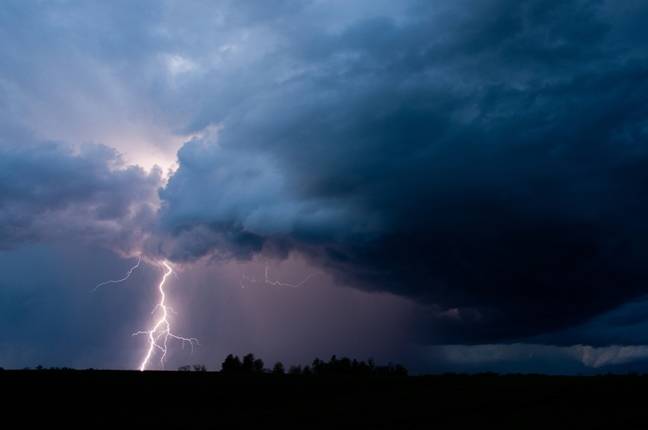Economy
Revealed: The highest and lowest fuel prices in every county as pump costs hit a record

The price of fueling our cars has reached a record level in Ireland and experts predict it will rise even more.
In-depth national survey conducted by Irish
independent He found that the average price of gasoline had risen to an all-time high of 172 cents a liter and the price of diesel had risen to 163 cents.
Our investigation took place over four days and included analysis of fuel prices at 260 service stations across the country.
It found that the highest average price of a liter of unleaded gasoline was in Co Galway at 174°C, followed by Dublin and Cavan at 173.9°C..
We also found Galway, Kildare, Wicklow and Wexford to be the most expensive counties for a liter of diesel, at 164°C.
While notable differences in prices can be found in individual counties, there is little variation nationwide.
The lowest prices per liter of gasoline and diesel were recorded at the same service station in Ko Lawa at 164°C and 154°C, respectively.
The highest price we’ve ever recorded per liter of gasoline was in Co-Meth at 177°C. The most expensive diesel ever recorded was 166°C in Kildare.
The high cost of fuel at this point in 2021 is in stark contrast to last year, when the national average price per liter for unleaded was 125 cents and diesel was 117 cents.
It comes after weeks of inflation hitting a 14-year high last month, mainly due to rising energy costs.
The main driver of energy costs has been the price of electricity, which is up 21 percent since this time last year, while gas prices are up 14 percent. Home heating oil 46 pcs.
The carbon tax increase included in last month’s budget further accelerated fuel and heating prices.
Michael Kilcoyne, president of Consumers Ireland, said higher prices will leave families and the elderly unable to fuel their cars and heat their homes this winter.
“Every cent the fuel goes up, the government increases more and more of its coffers. They have no interest in capping the fuel,” Kilquin said.
“They were able to cut the value-added tax for the hospitality sector after months of saying it was impossible, but for people who are freezing in the cold and stuck at home, there is nothing for them.
“It’s going to be a cold, harsh winter and hard to squeeze people out.
“Electricity has gone up more than 20 percent in one year. People are angry, and the government will feel that anger when the next election comes.
These prices more affect people with lower fixed incomes in rural areas. Many of them are pensioners who live on 237 euros per week.
« This is the kind of pricing that turns people into prisoners in their own homes. »
Anna Cullen, of AA Roadwatch, described the trend in fuel prices as « extremely worrying. »
« The last rise like this was in 2012, but prices peaked at 170 degrees Celsius and never went above, » she said.
“I have never seen prices as high as this before. We are looking forward to record levels of fuel.”
While there are many reasons why Irish consumers pay so much for fuel, the main one is taxes.
“We pay 60% tax at the fuel pump,” Colin said.
“That includes the value-added tax, and then you also have to look at the carbon tax, which was increased to 7.50 euros per ton, so that 2 cents was added to gasoline and 2.5 degrees Celsius to diesel.
In the October figures, a diesel fuel tank of 60 euros will rise by 1.48 euros and gasoline by 1.28 euros.
“If your gasoline is at 173.9 cents a liter, it will cost you 104 euros to fill up your car.
“This is very costly when you have a family trying to budget and pay their mortgage, groceries and general expenses.
“This is very worrying for people who live in rural Ireland because they depend on their cars.
They do not have the public transportation infrastructure to support their daily lives.
“In October, prices actually jumped by about 30 percent between 2020 and 2021.
A group of oil-exporting countries (OPEC) predicted that global demand for crude oil will exceed 2019 levels in 2023, and will continue to rise until 2035 before rising.
« So prices will continue to rise. »
The news comes as hundreds of carriers are due to disembark in Dublin next week in a massive protest over fuel prices.
Truckers will gather at six locations Wednesday morning and leave in a convoy to Kildare Street, where protesters will gather on foot outside Leinster’s home.
Irish Truckers and Truckers Association Against Fuel Prices is organizing a peaceful protest against rising operating costs outside of Dell.
The group has nearly 7,000 members, and truck drivers from all over Ireland are due to attend.
Owners of buses, tractors, vans and other commercial vehicles are encouraged to join the protest.
Eugene Drennan, President of the Irish Road Transport Association (IRHA) said:
Costs are at the highest level in the history of transportation.
Kevin McBartlan, chief executive of Fuels for Ireland, which represents fuel suppliers, said the record prices were due to a « convergence of events ».
« There was a challenge in the global energy supply, » he said.
And we have a global logistical problem of moving things all over the world. It affects everything, from children’s Christmas toys to food distribution.
This has an effect because we are paying more to import stockpiles of fuel into the country.
These are the broad social and political factors that have an impact. But that was coupled with the time that came with the carbon tax increase, which was immediately felt.
All of these things have combined to keep prices high and higher.
The obvious question anyone might ask is: Will prices drop any time soon? The answer is no one knows. If we did, we would all be an absolute fortune.
Pump prices usually follow crude oil prices with a difference of two to three weeks, and there is no indication that they will decrease in the near future.
The government really has an important role to play. They take an average of 60% of the fuel price.
“I think we are on the verge of getting one euro out of every liter of fuel purchased for transport to the government.
“Let’s say it’s 180C in some garages today. Of the remaining 80C, you’re bringing in a global commodity from around the world and refining it to exceptionally high fuel quality standards.
“You add biofuels to reduce carbon emissions and you transport it in a way that complies with perfectly adequate but stressful health and safety conditions, and you transport it to every corner of the country.
“I still sell it for less than a bottle of mineral water in the store.
“Profit margins on fuel are slim, so if you were to go to the local garage and buy
50 euros of fuel and the purchase of a cappuccino for 2.50 euros, the shopkeeper would have earned a lot more cappuccinos than on fuel.”

« Spécialiste de la télévision sans vergogne. Pionnier des zombies inconditionnels. Résolveur de problèmes d’une humilité exaspérante. »
Economy
Un employé d'un restaurant de restauration rapide de Cork reçoit une indemnisation après un licenciement abusif


« Spécialiste de la télévision sans vergogne. Pionnier des zombies inconditionnels. Résolveur de problèmes d’une humilité exaspérante. »
Economy
Le programme de conduite autonome de Tesla est une déception perpétuelle en termes de revenus
(Bloomberg) – L’écart entre ce que dit Elon Musk à propos de la commercialisation de la technologie de conduite autonome et ce que Tesla dira plus tard dans les documents réglementaires n’a jamais été aussi large.
Tesla a publié mercredi son rapport trimestriel 10-Q qui fournit un aperçu plus détaillé de la santé financière de l'entreprise. Pendant plusieurs années consécutives, Tesla a fourni des mises à jour régulières de ces données sur le montant des revenus qu'elle a reçus des clients et qui n'ont pas encore été entièrement reconnus. Une partie de ces revenus différés est liée à un produit en préparation : la conduite entièrement autonome, ou FSD, en abrégé.
Les revenus reportés des véhicules de Tesla s'élevaient à 3,5 milliards de dollars au 31 mars, soit peu de changement par rapport à la fin de l'année dernière. Sur ce montant, Tesla s'attend à reconnaître 848 millions de dollars au cours des 12 prochains mois, ce qui signifie qu'une grande partie des obligations de performance associées à ce qu'elle facture aux clients pour le FSD ne seront toujours pas satisfaisantes dans un an.
La société ne donne pas de détails sur ses performances médiocres, même si le titre du programme est connu pour être un abus de langage. FSD est un système d'aide à la conduite qui ne rend pas les voitures de l'entreprise autonomes ; Cela nécessite que les conducteurs vigilants gardent les mains sur le volant.
Dans ces documents, Tesla a également indiqué le montant des revenus différés réellement comptabilisés – et la société basée à Austin n’a toujours pas répondu à ses attentes. Il a reconnu 494 millions de dollars de revenus différés au cours des 12 derniers mois, soit moins que les 679 millions de dollars prévus il y a un an.
Ces chiffres ont pris encore plus d’importance à la lumière du ralentissement de l’activité automobile de Tesla et de l’accent mis par Musk sur le FSD. Le PDG a mis en place une exigence à la fin du premier trimestre, selon laquelle les employés devaient installer et démontrer un FSD à chaque client en Amérique du Nord avant de livrer le véhicule.
En fait, lors de la conférence téléphonique sur les résultats du premier trimestre de Tesla mardi, Musk a tracé une nouvelle ligne dans le sable : « Si quelqu'un ne pense pas que Tesla va résoudre le problème de l'autonomie, alors je pense qu'il ne devrait pas investir dans le secteur. entreprise. » « Nous le ferons, et nous le ferons », a déclaré l’exécutif.
Alors que Tesla a bénéficié au premier trimestre de la hausse des revenus FSD par rapport à l'année dernière, en raison de la sortie d'une fonctionnalité en Amérique du Nord appelée Autopark, les revenus totaux ont chuté de 8,7 % à 21,3 milliards de dollars. Il s'agit de la première baisse d'une année sur l'autre de l'entreprise en quatre ans et de la plus forte baisse en pourcentage depuis 2012.
Musk a donné le coup d'envoi de l'appel aux résultats de Tesla en qualifiant la dernière version de FSD de « profonde » et s'améliorant rapidement. La société a réduit le prix d’achat de la fonctionnalité ou d’abonnement pour l’utiliser sur une base mensuelle et propose également des essais gratuits. Le PDG a déclaré que la société avait eu des discussions avec un grand constructeur automobile au sujet d'une licence FSD.
« Encore une fois, je recommanderais fortement à tous ceux qui, je pense, envisagent des actions Tesla, de vraiment conduire FSD », a déclaré Musk à la fin de l'appel. « Il est impossible de comprendre l’entreprise si on ne la comprend pas. »
D'autres histoires comme celle-ci sont disponibles sur bloomberg.com
©2024 Bloomberg LP
Ouvrez un monde d'avantages ! Des newsletters utiles au suivi des stocks en temps réel, en passant par les dernières nouvelles et un fil d'actualité personnalisé, tout est là, en un seul clic ! Connecte-toi maintenant!

« Spécialiste de la télévision sans vergogne. Pionnier des zombies inconditionnels. Résolveur de problèmes d’une humilité exaspérante. »
Economy
Le tribunal accorde une injonction interdisant temporairement à un homme de travailler avec une entreprise rivale – The Irish Times
:quality(70)/cloudfront-eu-central-1.images.arcpublishing.com/irishtimes/7FHEWBJYGBFKZAB3JBGKTDKSJ4.JPG)
La Cour suprême a accordé une injonction interdisant à un ancien cadre supérieur travaillant pour un fabricant de composants de dispositifs médicaux d'accepter un emploi chez une entreprise rivale en attendant l'audience sur un litige portant sur la question de savoir si son emploi est soumis à une clause de non-concurrence.
Niall Cullen était chef de produit chez Creganna Ltd, une société irlandaise basée à Galway, avant de se voir proposer un poste de direction chez son rival Lake Region Medical en janvier dernier.
Creganna opère au sein de l'unité commerciale TE Medical d'une société mondiale connue sous le nom de TE Connectivity, elle-même détenue par la société suisse Tyco Electronics Group SA.
TE Connectivity est l'une des principales sociétés d'externalisation de dispositifs médicaux au monde, spécialisée dans la conception et la fabrication de dispositifs d'administration et d'accès mini-invasifs pour une gamme de traitements médicaux.
En janvier dernier, M. Cullen, qui était chef de produit senior chez Creganna et a joué un rôle clé dans le maintien des relations avec les principaux décideurs d'un certain nombre d'entreprises clientes mondiales, a remis son préavis expirant le 29 avril.
Crejana a appris qu'il occuperait un poste de direction chez Lake Region Medical, qui fait partie du groupe Integar qui est également l'un des principaux fabricants mondiaux de dispositifs médicaux.
Une action a été déposée devant la Cour suprême visant à l'empêcher de prendre un emploi après le 29 avril car, a déclaré Crejana, cela constituerait une violation d'une clause de non-concurrence de son contrat qui lui interdit de travailler pour un concurrent dans les 12 mois. de la résiliation de son contrat. emploi.
Crejana affirme que la clause de non-concurrence était nécessaire pour protéger son intérêt légitime à garder confidentielles ses informations commerciales hautement sensibles, qui, selon lui, seraient toujours en danger s'il prenait son poste chez Lake Region Medical.
Cullen et la société Lake Region, qui est également poursuivie, affirment que la clause de non-concurrence est invalide et inapplicable parce qu'elle est déraisonnable et trop large pour être justifiée.
Le juge Oisin Quinn s'est dit convaincu que Crejana avait démontré qu'il y avait une question sérieuse à résoudre, à savoir que si M. Cullen acceptait le nouvel emploi, cela constituerait une rupture de contrat exécutoire en raison d'une violation de la clause de non-concurrence. dans son contrat. contrat de travail.
Il était convaincu que Creganna avait soulevé une question sérieuse au procès quant à la validité de la clause de non-concurrence.
Il était également convaincu que, puisque Crejana était prête à s'engager à continuer de payer M. Cullen jusqu'au procès de la réclamation, qui devait désormais avoir lieu en juillet prochain, le maintien du statu quo présentait le moins de risques d'injustice. En attente d'une décision sur l'affaire ou sur une autre affaire.
Le juge a également rejeté l'affirmation de M. Cullen selon laquelle Crejana était coupable de retard dans la présentation de la demande d'injonction.

« Spécialiste de la télévision sans vergogne. Pionnier des zombies inconditionnels. Résolveur de problèmes d’une humilité exaspérante. »
-
entertainment2 ans ago
Découvrez les tendances homme de l’été 2022
-
Top News2 ans ago
Festival international du film de Melbourne 2022
-
Tech1 an ago
Voici comment Microsoft espère injecter ChatGPT dans toutes vos applications et bots via Azure • The Register
-
science2 ans ago
Les météorites qui composent la Terre se sont peut-être formées dans le système solaire externe
-
science3 ans ago
Écoutez le « son » d’un vaisseau spatial survolant Vénus
-
Tech2 ans ago
F-Zero X arrive sur Nintendo Switch Online avec le multijoueur en ligne • Eurogamer.net
-
entertainment1 an ago
Seven révèle son premier aperçu du 1% Club
-
entertainment1 an ago
Centenaire des 24 Heures – La musique live fournit une bande-son pour la course








